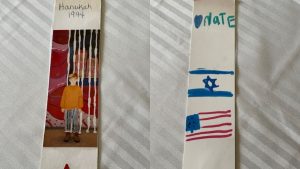Roth returns to N.J. roots to weave a poignant tale in ‘Nemesis’
Published October 13, 2010
Philip Roth’s latest novel, “Nemesis,” reconfirms his credentials as perhaps the greatest living American Jewish novelist. In “Nemesis,” Roth revisits the familiar Newark, N.J. of his family roots, evoking the summer of 1944 when the polio epidemic created a near panic across the nation.
The protagonist in “Nemesis” is a sweet-tempered 23-year-old named Bucky Cantor, who has a summer job as a playground supervisor in Newark at the very time that polio has begun to strike children and youths, and while the United States was still at war with Nazi Germany and Imperial Japan. Bucky wants to serve his nation with his friends overseas, but his poor vision prevents him from enlisting.
ADVERTISEMENT
Before the origins and treatments of polio were discovered, rumors about its origins were rampant across the nation. In Newark, fingers were pointed at Italian street gangs, suspicious food sold by street vendors and a host of other wrongful theories. Kids were even discouraged from seeking relief from the broiling heat in “air-cooled” movie theaters for fear of coming into contact with “carriers” of the dreaded disease. Many a comic book collection fell victim to over-zealous moms pitching them out of fear that their brightly colored pages might contain the deadly polio “germ.” The fear and panic over polio remind the reader of the initial reactions to HIV-AIDS before its nature, cause of transmission and treatments were understood or available.
Bucky Cantor, in contrast to the self-involved, sexually obsessed Roth protagonists like Alexander Portnoy, is a young man with no hidden agenda. He is entirely altruistic and deploys his leadership and role model skills to help the young people at the playground deal with their fears of the polio epidemic, which has already stricken and killed children they know. One morning, Bucky notices that the usually rambunctious boys who enjoyed playing ball “seemed unusually subdued.” And of the dozen or so girls who usually showed up each morning, only three were there-“only three whose parents would allow them to leave the vicinity of their homes for fear of their making contact with other playground kids. The missing girls may have been among the neighborhood children he’d heard about who had been sent to take refuge with relatives a safe distance from the city, and among those whisked from the menace to be immersed in, immunized by, the hygienic ocean air of the Jersey Shore.” But Bucky and his neighbors soon learn that there is no “safe distance” from the epidemic. Just as efforts to by European Jews to escape the Holocaust by sending their children to live in the countryside, often with Gentile farmers did not prevent the Holocaust, the polio epidemic found its way into the countryside as well.
Bucky wonders how he was fated to remain on the home front while his Newark buddies were off to war, only to face a deadly epidemic in America. Roth has wrestled with such ironies in previous novels. In “Indignation,” a novel set in 1951, an intense, studious Jewish college student ends up being killed in the Korean War despite the many precautions his father takes to protect him. In “Ghost Writer, one of Roth’s most brilliant novels, the protagonist, a young Jewish writer with a background similar to Roth himself, meets a young student named Amy Bellette. In his mind, he imagines that Amy Bellette was actually Anne Frank, who had survived the war and came to the United States only to discover that her wartime diary had become an iconic classic. She chooses to hide her identity in order to preserve her status as what Roth called “our only Jewish saint.” Why, the protagonist asks, did he stay in the comparative safety of suburban Newark during World War II at the very time that Anne Frank, another young gifted Jewish writer, was trapped in the famous annex?
While Roth is a very “Jewish” albeit secular author, “Nemesis,” like several of his previous works, has an air of Greek tragedy about it. Bucky “escapes” being sent to Europe to face the danger of death at the hands of the Nazis he wanted to fight. His job as a playground director during the infamous summer of 1944 gives him the opportunity to show the leadership skills that he might have had as an officer in the U.S. Army. But when the epidemic becomes even more widespread, and his girl friend Marcia Steinberg offers him the chance to take a job at a summer camp in the Poconos, he abandons the very kids who had seen him as a role model and protector.
“Man plans. God laughs,” goes the old Jewish expression. Roth asks God through Bucky: “Why does He set one person down in Nazi- occupied Europe with a rifle in his hands and the other in the Indian Hill dining lodge in front of a plate of macaroni and cheese? Why does he place one Weequahic (a suburb of Newark) in polio-ridden Newark for the summer and another in the splendid sanctuary of the Poconos?”
Roth was only 11 years old at the time of the 1944 polio epidemic, which he evokes so vividly in ‘Nemesis.” In his more “senior” years, as a man and as a writer, Roth is grappling with issues relating to mortality and the ironies of place and time. In “The Plot Against America,” Roth imagined a parallel world in which Charles Lindbergh was elected President in 1940 and made a “separate peace” with Hitler. In that novel, as in “Nemesis,” Roth describes the desperate efforts of people to escape their fates.
Roth once said, “at any event, all I can do with my story is to tell it and tell it and tell it.” Indeed he does, and “Nemesis” confirms Roth’s status as one of the most brilliant storytellers in the history of Jewish fiction.














